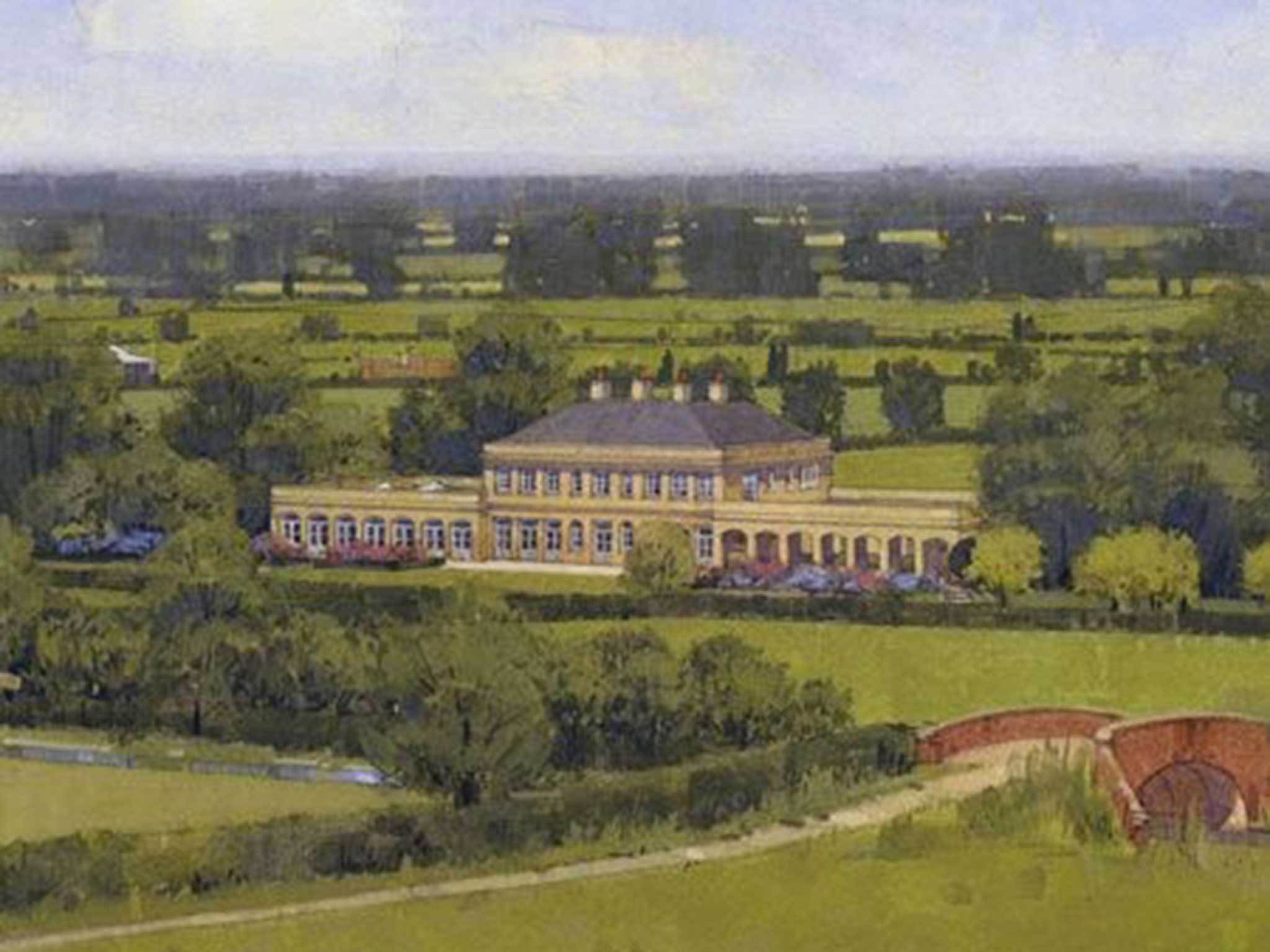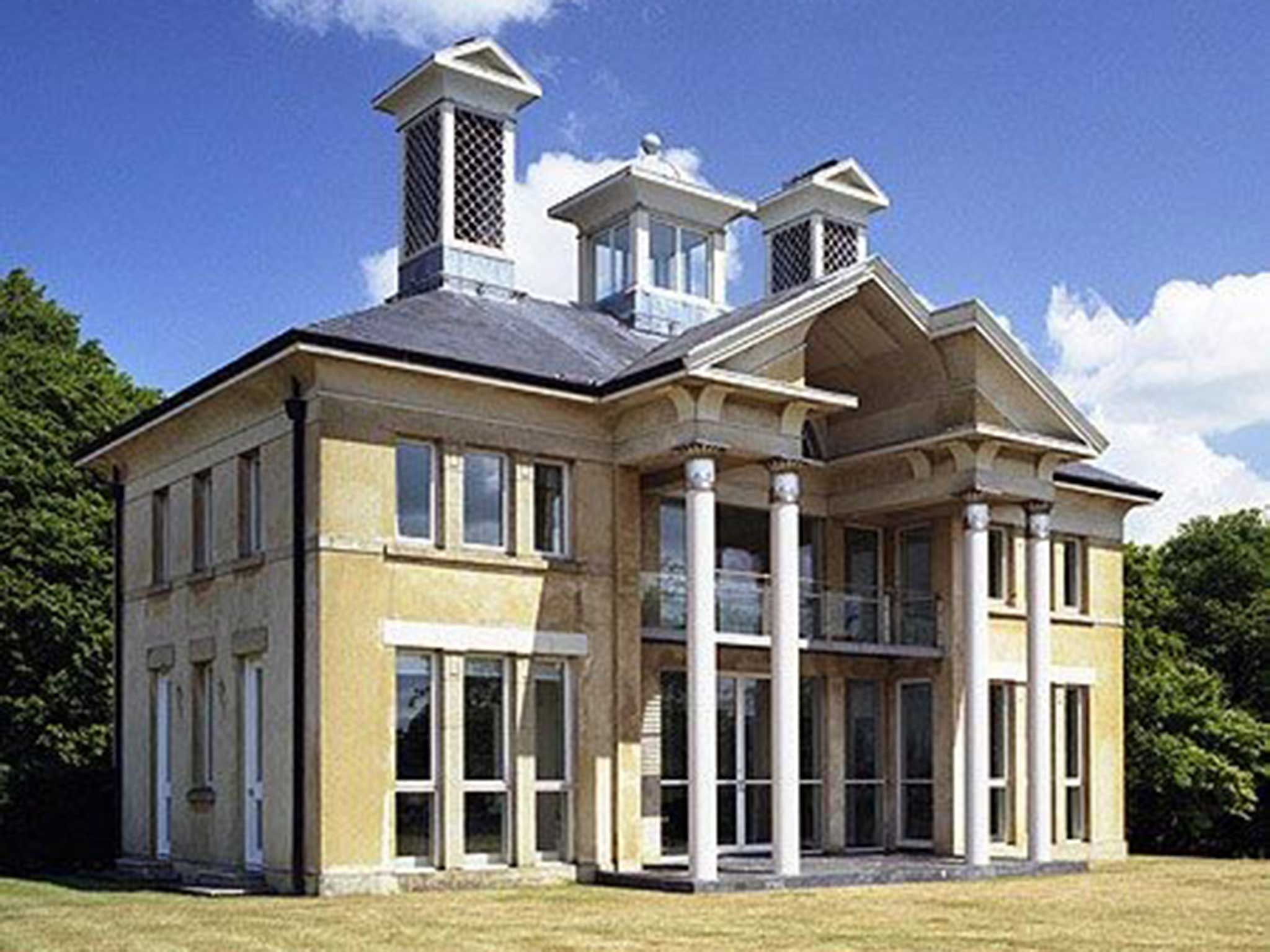England's new mansions: monstrous carbuncles or superb architecture?
Country piles of arguable quality are sprouting everywhere, but are they a decadent irrelevance today?

Your support helps us to tell the story
From reproductive rights to climate change to Big Tech, The Independent is on the ground when the story is developing. Whether it's investigating the financials of Elon Musk's pro-Trump PAC or producing our latest documentary, 'The A Word', which shines a light on the American women fighting for reproductive rights, we know how important it is to parse out the facts from the messaging.
At such a critical moment in US history, we need reporters on the ground. Your donation allows us to keep sending journalists to speak to both sides of the story.
The Independent is trusted by Americans across the entire political spectrum. And unlike many other quality news outlets, we choose not to lock Americans out of our reporting and analysis with paywalls. We believe quality journalism should be available to everyone, paid for by those who can afford it.
Your support makes all the difference.Are the rural mansions that are cropping up across the country carbuncling Britain’s green belts, or are they adorning our fields and meadows with superb architecture?
That question has jumped into focus among architects and conservationists alike after planning approval was granted for a vast country pile in Warwickshire. Designed in the grand classical manner by Robert Adam, one of the Prince of Wales’s favourite architects, it is one of many such mansions being nodded through following little-noticed changes in the law.
The planned stone and stucco building will be erected on a disused railway embankment – and developers have underlined that the project will also involve the creation of “new woodland and hedgerows, native wildflower meadows, ponds, ditches and an orchard”.
Architectural tastes vary, of course. Design hipsters, outraged by the project’s traditionalist commitments, will even now be texting volleys of “WTF”s. Other newly approved designs, like the futuristic country pad Serenity, near Nottingham, offend different groups. “Disgusted of Tunbridge Wells” will no doubt be scrawling hate mail in green ink addressed to Baca, the clever young architectural practice behind it, to complain at what they see as an amoeba-like monstrosity.

The real issue is this: are projects like these genuinely excellent, architecturally? Are they innovative? Are they beautiful? Or are they a decadent irrelevance in a Britain mired in a housing crisis?
“We owe it to the fields,” says the popular philosopher Alain de Botton, “that our houses will not be the inferiors of the virgin land they have replaced. We owe it to the worms and the trees that the buildings we cover them with will stand as promises of the highest and most intelligent kinds of happiness.”
In the 1980s and early 90s, neo-classical architects such as Quinlan Terry and John Outram managed to get lavish, if not riotous, chunks of country house architecture into the landscape. But it wasn’t until 1997 that John Gummer, then the Environment Secretary, codified the process by introducing Planning Policy Statement 7, which allowed substantial new country houses to be built in open countryside only if they were of outstanding architectural quality.
But that led to a bias for familiar historic architectural styles, and the policy was refined in 2004, allowing new country houses of exceptional and innovative design quality that reflected “the highest standards of contemporary architecture”.

This caused huge excitement in the architectural community. It meant they could really go for it, design-wise, and hope that planners would be seduced by their proposals. The comedian Rowan Atkinson duly commissioned the superstar American architect Richard Meier to design an articulated, snow-white villa in rural Oxfordshire; work has just started on site.
Then, in 2012, the planning minister Greg Clark changed a key word in paragraph 55 of the planning guidelines: architects could design country houses that were truly outstanding or innovative. The word “or” replaced the original “and”, meaning that architectural innovation is not absolutely imperative. Retro-classical, Thunderbirds-Are-Go-style, buried bunker-homes – anything goes in the country, up to a point.
This policy has produced beauties and beasts. Among the former are Sir David Chipperfield’s exquisitely composed Fayland House in Buckinghamshire; Downley House, Hampshire, a sophisticated architectural collage designed by BPR Architects; and James Gorst’s pale, vaguely Cubist Hannington Farm, Northamptonshire.
The gaffs include Robert Adam’s steroidally classical Solar House in Sussex; Groundwork’s slabby-chic scheme for Broadstone Halt in Dorset; and Robin Hamilton’s technically sophisticated but architecturally clunky Dumble House in Derbyshire, whose design had to be vetted by a professional design review panel, the architectural equivalent of “ghostbusters”.

Too many clients, and their architects, are stuck in a Dumb and Dumber aesthetic. Where is the 21st-century equivalent of, say, Castle Drogo on Dartmoor, Edwin Lutyens’ brilliantly original fusion of medieval, Tudor, and early modernist styles?
Rory Olcayto, editor of The Architects Journal, says there might have been a truly innovative jump forward in country house design in 2002 if planners had accepted Kathryn Findlay’s radical, starfish-shaped proposal for Grafton New Hall, Cheshire. “But isn’t the country house debate a bit of a red herring?” he added. “It’s almost obscene in view of the current housing crisis.”
Jason Orme, editor of Homebuilding & Renovating magazine, says more contemporary country house designs are being accepted now than a few years ago: “Paragraph 55 gives credibility to the process, but the better planners say they don’t get enough good designs for one-off houses. But I also see a lot of great designs that don’t get built.”
The demand to build luxurious country homes in Britain is increasing, and their design quality will remain a hit-and-miss affair that will only rarely deliver Alain de Botton’s “highest and most intelligent kinds of happiness”.
Join our commenting forum
Join thought-provoking conversations, follow other Independent readers and see their replies
Comments